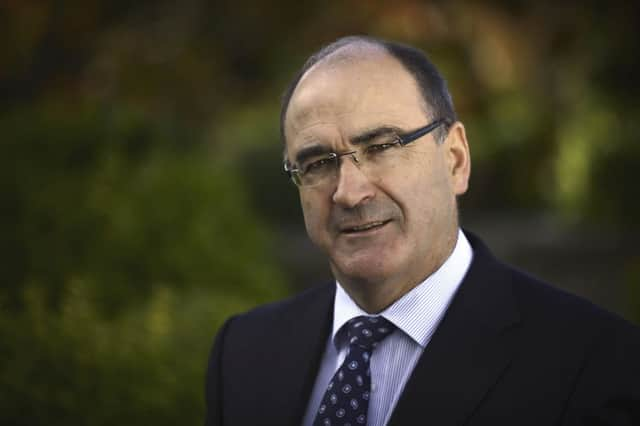Lakeland weighs up Fane Valley options


Speaking on Day 3 of Balmoral Show, Lakeland CEO Michael Hanley confirmed that the processing plant had been purchased for an agreed sum.
“There were no other strings attached. The site is home to two milk driers and a butter making plant. We bought the entire operation, the transport fleet and the stocks that were left in store at the beginning of this month. We are now assessing the way in which the Banbridge facility can be put to best use moving forward.”
Advertisement
Hide AdAdvertisement
Hide AdHanley also confirmed that all of Fane Valley’s 220 dairy farmer suppliers had agreed to come on board as Lakeland suppliers.
“This represents a milk pool of some 230m litres,” he added.
“Lakeland has developed a business model focussed on securing a commercial outlet for all of the milk we process. This will not change moving forward.”
The Banbridge operation joins the Pritchitt Foods business in Newtownards as part of Lakeland’s business portfolio in Northern Ireland.
Hanley commented:
Advertisement
Hide AdAdvertisement
Hide Ad“Newtownards is a crucial part of our operation as it constitutes Lakeland’s global logistics’ centre.”
Lakeland generated a turnover of €590m in 2015, of which 98% was generated in the form of dairy export sales. Profit before tax increased by 10% to €12.8m.
“All of our customers are keen to buy more product: the problem is the price,” Hanley explained.
“As a business, we are totally committed to adding value. And this will help secure the viability of Lakeland Dairies into the future.”
Advertisement
Hide AdAdvertisement
Hide AdHe continued:“There is just too much milk in the world at the present time. And until supply comes more into line with demand, international markets will remain in the doldrums.
“These are fundamental realities which the entire dairy sector is having to cope with at the present time.
“Following from the abolition of quotas and the ongoing imbalance in global dairy markets, 2015 was a challenging year for milk producers and the dairy industry as a whole.
“The goal of all our developments is to underpin and maximise milk price while retaining our capacity to re-invest in the business.
“This will be achieved through a sustainable business model including appropriate economies of scale with in-built efficiencies, cost effectiveness and a focus on quality, innovation and growth.”